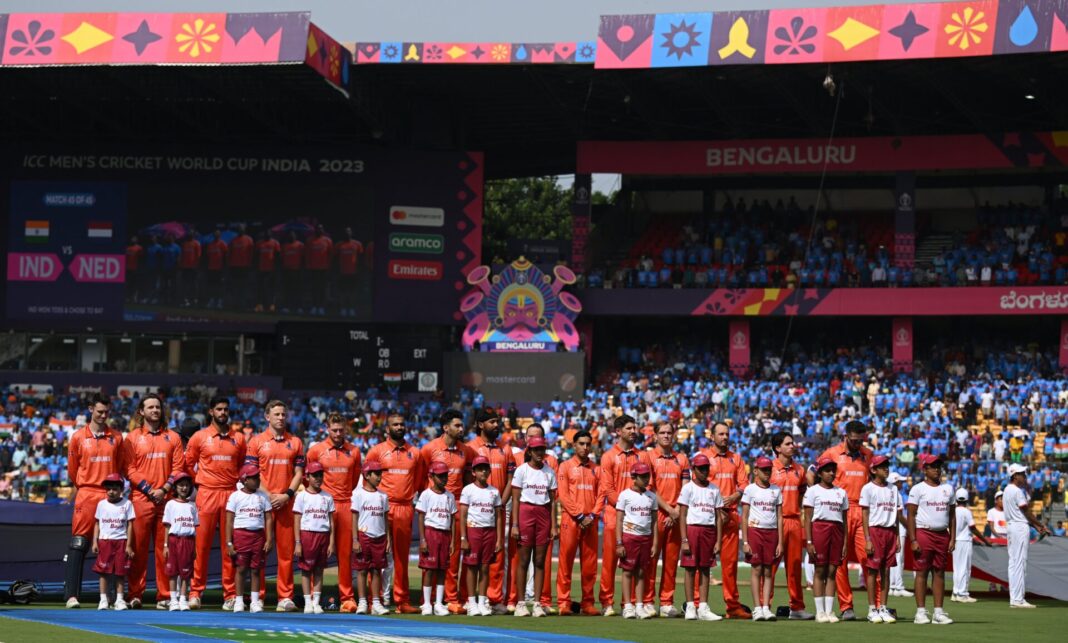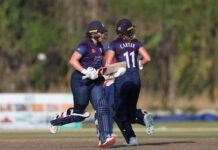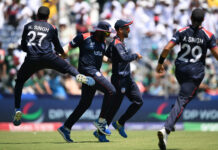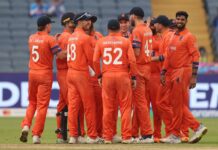
The Indian juggernaut rolled relentlessly over the Netherlands in Bengaluru on Sunday, moving into a semi-final encounter with New Zealand with an untroubled 160-run victory.
With three fifties and two centuries among their top five on a pitch which offered the bowlers little or no encouragement, the hosts could scarcely have asked for a more agreeable conclusion to the league phase, while for Scott Edwards’ side it was a tough end to a tournament which has shown both the remarkable progress they have made and how far they still have to go.
There were ominous signs of how the match would unfold from the moment Rohit Sharma and Shubman Gill, the former having won the toss and elected to bat, took eleven from Aryan Dutt’s opening over, and by the end of the initial powerplay the Indian openers had plundered 91 runs.
The Dutch attack was by no means the first to suffer in this way, and once the fielding restrictions relaxed Roelof van der Merwe, Paul van Meekeren and then Bas de Leede were able to pull the scoring back.
They picked up a couple of wickets into the bargain: Teja Nidamanuru might have been auditioning for the National Ballet as he took an overhead catch on the square leg boundary off Van Meekeren to remove Gill for 51, pirouetting to avoid putting a foot on the toblerone, while Wesley Barresi made no mistake as Sharma, on 61, holed out to long on, giving De Leede his 15th wicket of the tournament and taking him past his father Tim as the Netherlands’ highest World Cup wicket-taker.
That brought Virat Kohli in to join Shreyas Iyer, and the Bengaluru crowd, a sea of blue with occasional orange patches, erupted for their hero as if he were Bradman playing his final Test.
He almost gave them a Bradman moment, too, as, having accumulated five singles, he mistimed a drive off De Leede and the ball fell just short of substitute fielder Shariz Ahmad, diving forward at mid-off.
Once he had settled, however, he started to move remorselessly towards his fiftieth ODI century, until Van der Merwe, whose initial five-over spell had conceded just 25 runs, returned to sneak one past him as he made to cut and clip the top of off stump.
Kohli departed for 51, but the total was now 200 for three with more than twenty overs remaining and Iyer well set, and the Dutch needed to keep taking wickets if they were to have any chance of holding India to a score they had any prospect of chasing.
Instead of which, Iyer and KL Rahul proceeded to put on 208 for the fourth wicket in just 21 overs, taking full advantage of the ground’s bijou dimensions and the flattest of flat pitches.
The Dutch bowlers plugged away, but they were unable to stem the flow of boundaries, Iyer reaching his fourth ODI century and his first of the World Cup with four overs remaining; at this point Rahul was on 70, but an onslaught in the final overs took him to three figures and the total past 400 before he holed out to Sybrand Engelbrecht at deep square leg, a consolation wicket for De Leede.
Iyer remained not out on 128, and the total of 410 for four fell just short of the Indian record for a World Cup innings, set against Bermuda in 2007.
In these circumstances Van der Merwe’s figures of one for 53 from ten were even better than they look at first sight, while Van Meekeren and De Leede also stood up well to some fierce punishment from some of the world’s finest batters.
Barresi again went early, caught behind by Rahul off Mohammed Siraj in the second over, but then Max O’Dowd and Colin Ackermann confirmed, not only that the pitch was a pace bowlers’ graveyard, but also that they were fine strokemakers in their own right: 62 came from the initial powerplay, 42 of them in boundaries, and it took the introduction of left-arm wrist-spinner Kuldeep Yadav to halt their progress.
In his second over he trapped Ackermann in front for 35 as he tried to sweep his way out of trouble, and he might have had another as Siraj put down a catch from O’Dowd on the long on boundary.
But he was now bowling in tandem with Ravindra Jadeja, and it was the latter who bowled O’Dowd in his next over, the opener departing for 30.
With Engelbrecht and Edwards largely restricted to singles and the asking rate assuming Himalayan proportions Sharma began to experiment with his attack, the pretext being the need to find a sixth bowler against the possibility of an injury in the two remaining matches.
Since he turned first to Kohli the crowd erupted again, and it became ecstatic when a leg-side wide tempted Edwards into a tickle which was well taken by Rahul moving smartly to his left.
After three overs Kohli was succeeded by Gill and then by Suryakumar Yadav, but Engelbrecht and De Leede were unable to take full advantage of this declaration bowling, and in the meantime Jasprit Bumrah, returning at the other end, had bowled De Leede with a magnificent yorker.
Engelbrecht again batted with great composure until he was bowled by Siraj for 45, the Netherlands’ highest run-scorer of the tournament with exactly 300 in eight innings, but the closing stages of the innings were enlivened by Nidamanuru, who hammered six sixes in his 39-ball 54, two of them off successive overs by Kuldeep.
Van der Merwe, too, contributed a valedictory cameo, smacking first Kuldeep and then Jadeja over the rope before departing with an eight-ball 16, but it could only end one way, and when Sharma came on himself it did, Nidamanuru hitting him for six to pass fifty for the fifth time in ODIs and then finding Shami on the long on boundary when he tried to repeat the dose.
Edwards and his side took a well-deserved lap of honour to bring their incredible adventure to a close, but there will be plenty to reflect on in the weeks and months ahead as they prepare themselves for a diet of League 2 matches, next year’s T20 World Cup, and who knows, a Great Southern African Trek in four years’ time.
There was mingled pride and disappointment in Edwards’ voice as he did his post-match interview, and one could see why: victories over South Africa and Bangladesh were great achievements, but he and his side wanted more than that, and it’s a measure of the seriousness of their mission that they will head home a little dissatisfied.
You’re reading Emerging Cricket — brought to you by a passionate group of volunteers with a vision for cricket to be a truly global sport, and a mission to inspire passion to grow the game.
Be sure to check out our homepage for all the latest news, please subscribe for regular updates, and follow EC on Twitter, Facebook, LinkedIn and YouTube.
Don’t know where to start? Check out our features list, country profiles, and subscribe to our podcast. Support us from US$2 a month — and get exclusive benefits, by becoming an EC Patron.






